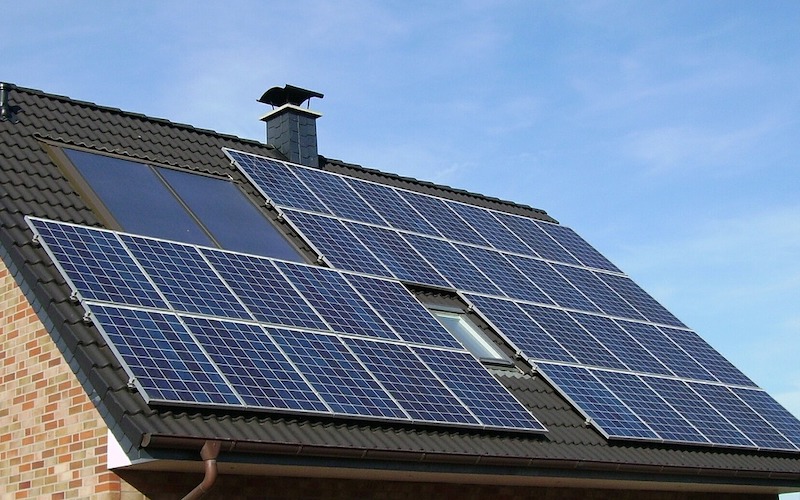A look at how sustainable living is better for the planet – and your wallet.
In 2017, the U.S. Energy Information Administration (EIA) found that 39 percent of all U.S. energy consumption came from the residential sector. However, with today’s technology and the growing world of IoT, with just a few technological updates, homes are able to run much more efficiently. Not only does this smart home tech help homeowners reduce their environmental footprint, but reduce their bills as well. On top of that, as sustainability becomes increasingly mainstream and accessible, “greening” your home could even improve resale value and make it an attractive option for younger buyers. Still, with so many smart home devices, it can be difficult to understand where to start. If you’re looking to save money and the planet, here are some tips to make your house more sustainable.
Smart Cooling & Heating
Naturally, when many people think of a sustainable home, their mind first goes to energy usage. How much energy does my house use and how can I reduce it? According to a 2015 survey conducted by the EIA, around 32 percent of residential energy usage is due to heating (15 percent) and cooling (17 percent). At nearly a third, heating and cooling are the largest contributors to energy consumption in U.S. households, which makes it a good place to start.
The Nest Thermostat has long been a leader in reducing heating and cooling costs in the home. Currently, according to their website, they have helped save over 23,500,000,000 kWh of energy. The key is that the Nest learns your habits, automatically turning on and off according to your schedule and needs. One study conducted by The Energy Trust of Oregon installed Nests in 185 homes. At the end of the study, they found that homes with the device averaged 12 percent savings on electricity used for heating. With simple installment and a user-friendly interface, a smart thermostat is a great place to start when looking to make your home more efficient, even for the most tech-challenged.
Smart Solar
A study by Research Now found that there is a strong consumer preference for bundling a residential solar energy system with smart home technology. Rooftop solar panels are becoming increasingly popular (and cheaper) as trends and technology develop. For example, Tesla’s new solar roof panels cost only $42 per square foot compared to standard terracotta tiles that cost around $50 per square foot. If you’re ready to make the solar investment, then it isn’t a huge leap to add in some smart home tech that allows you to manage and monitor your solar usage.
At CES 2017, Vivint Solar debuted their home assistant Sky. Equipped with an energy management system, a control panel, a thermostat, and other home sensors, Sky collects energy and solar data and then, using algorithms and artificial intelligence, makes suggestions and automatically fine-tunes parts of the home. According to Alex Dunn, president of Vivint Smart Home, smart home and solar tech are a perfect match: “Before long, every home will be intelligent, and we believe solar energy is a key component of the smart home experience.”
Smart Water
According to the U.S. Geological Survey, in 2016 the average person consumed 80-100 gallons of water a day. The survey showed that older appliances tend to use more water. Older showers can use up to five gallons of water per minute, while water-saving shower heads use only about 2 gallons per minute. A newer dishwasher, for example, might use around 6 gallons per wash cycle while an older model might use closer to 16 gallons. Thus, when it comes to water, a good place to start would be ensuring your plumbing and all of your appliances are up to date.
The next step would be to invest in some smart home tech that can monitor your water usage. One potential cause of a high water bill is leaks. Just a dripping faucet can waste up to 20 gallons of water a day. Luckily, there are smart sensors that can let you know when there is a leak. One example is the smart leak and freeze detector by Roost. The device can sense water leaks for toilets, sinks, and hot water heaters and send alerts directly to your smartphone.
But, maybe you want to learn more about your water usage so you can adjust accordingly. Typical water bills may not break down your consumption in a way that is easy to interpret. However, with a smart water meter like FLUID, you can understand exactly when, where, and how much water you’re consuming in your home on a daily basis. FLUID simply snaps around the main water pipe in your home, allowing you to access real-time reports on your smartphone via the FLUID app. Using ultrasonic technology, the device is able to measure the rate of water flow without cutting into the pipe. Since each appliance has a signature run rate, FLUID can even learn where water is coming from, allowing the user to understand which appliances use the most water.
To learn more about simple home water conservation tips, check out this guide.











